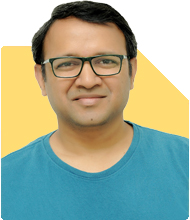Sir
I have been investing in mutual funds for the last 5 years. Now the corpus is around 5.5 lakhs . I have the following funds in my portfolio. Please asses my portfolio or need switch.
1. Nippon india large cap fund 2000
2. Mirae asset large cap 3000
3.Axis elss tax saver 1000
4. Kotak elss tax saver 1000
5. Axis Blue chip fund
6. Jm flexi cap fund 2200
7. Motilal oswal mid cap 2000
8. Axis mid cap 1000
9. Icici prudential passive multi asset for regular growth one time amount 5000 .
10.Sbi contra fund 2000
Sir i need to build a corpus of 1.5 crore in next 12 years. My age is now 38. Please review .
Ans: You have built a diversified portfolio with a combination of large-cap, mid-cap, ELSS, and flexi-cap funds. Each fund serves a specific purpose, but a review will help optimize your investments to meet your goal of Rs. 1.5 crore in 12 years. Let’s assess each category.
Large-Cap Funds
Nippon India Large Cap Fund – Rs. 2,000 per month
Mirae Asset Large Cap Fund – Rs. 3,000 per month
Axis Bluechip Fund
These funds focus on large-cap companies, offering stable growth but with relatively lower risk. While having multiple large-cap funds ensures stability, it may lead to overlap in the portfolio. You can consider consolidating them into 1 or 2 funds to reduce redundancy. Mirae Asset and Axis Bluechip are solid options for continued long-term investments.
ELSS Funds
Axis ELSS Tax Saver – Rs. 1,000 per month
Kotak ELSS Tax Saver – Rs. 1,000 per month
ELSS funds offer tax benefits under Section 80C. However, having two ELSS funds for Rs. 2,000 might not be necessary. You can choose the one with consistent performance and focus your ELSS investment there. Axis ELSS has performed well historically, but assess both before making a decision.
Mid-Cap Funds
Motilal Oswal Mid Cap – Rs. 2,000 per month
Axis Mid Cap – Rs. 1,000 per month
Mid-cap funds offer higher growth potential than large-cap funds, but with more risk. Holding two mid-cap funds is a balanced strategy, but since the Axis Mid Cap has been consistently strong, you can consider increasing your SIP here. Motilal Oswal Mid Cap is a good performer but may need to be watched for volatility.
Flexi-Cap Funds
JM Flexi Cap Fund – Rs. 2,200 per month
Flexi-cap funds give fund managers the flexibility to invest across market capitalizations, reducing concentration risk. This fund provides good diversification. Review its performance regularly, as flexi-cap funds can vary in returns based on market conditions.
Passive Multi-Asset Fund
ICICI Prudential Passive Multi-Asset Fund (One-time investment of Rs. 5,000)
This fund combines equity, debt, and gold to balance risk. While passive funds reduce the need for active monitoring, they may not provide the same growth potential as actively managed funds. Actively managed funds tend to perform better in dynamic markets, which could better align with your long-term goal of wealth creation.
Contra Fund
SBI Contra Fund – Rs. 2,000 per month
Contra funds follow a contrarian investment strategy, buying when others are selling. While this can provide significant gains during market recovery, contra funds may experience long periods of underperformance during market booms. It's a high-risk option that may not suit every portfolio. Regularly review its performance to ensure it fits with your investment goals.
Suggestions for Improvement
Consolidate Funds: You have multiple large-cap and ELSS funds. Streamline to 1 or 2 per category to reduce overlap and improve focus. A well-performing large-cap fund and one ELSS should suffice.
Increase SIP in High-Growth Funds: Focus more on mid-cap and flexi-cap funds, as they have higher growth potential. Increase your SIP in Axis Mid Cap and JM Flexi Cap, as they can boost your returns over the long term.
Review Contra and Passive Fund: SBI Contra and ICICI Passive Multi-Asset may not align with your goal of aggressive wealth creation. Consider switching to funds with more aggressive growth profiles, like a focused equity fund or a small-cap fund, to maximize potential returns.
Building a Rs. 1.5 Crore Corpus
To achieve your goal of Rs. 1.5 crore in 12 years, you'll need to invest aggressively. Based on your current portfolio, the estimated return would range between 10-12% annually, depending on market conditions and fund performance. To reach Rs. 1.5 crore in 12 years, you may need to increase your monthly SIP amount to around Rs. 20,000-25,000, depending on the returns.
Steps to Build the Corpus:
Increase SIP Contributions: To reach your goal, gradually increase your SIP amount over time. Aim to raise your SIP to Rs. 20,000-25,000 per month.
Rebalance Annually: Revisit your portfolio at least once a year. Make sure your portfolio remains aligned with your long-term goal.
Stick to Long-Term Investment: Avoid switching funds frequently. Stay committed to your investment horizon, and let the power of compounding work for you.
Emergency Fund: Ensure that you have an emergency fund in place, covering at least 6 months of expenses. This will prevent you from withdrawing your investments during unforeseen events.
Tax Planning with ELSS
You are already investing Rs. 2,000 in ELSS funds, which qualifies for tax deductions under Section 80C. Continue this as part of your tax-saving strategy, but make sure it fits into your overall portfolio without over-diversifying.
Final Insights
Your portfolio is well-diversified but can be simplified by reducing overlapping funds.
Focus on high-growth funds like mid-cap and flexi-cap to achieve your long-term goals.
Regularly review and rebalance your portfolio based on performance and market conditions.
Increase your SIP contributions gradually to ensure you are on track for your Rs. 1.5 crore goal in the next 12 years.
Avoid frequent switching; give your investments time to grow.
Tax planning with ELSS funds is good, but one fund is enough for your tax-saving needs.
Best Regards,
K. Ramalingam, MBA, CFP,
Chief Financial Planner,
www.holisticinvestment.in
https://www.youtube.com/@HolisticInvestment




























